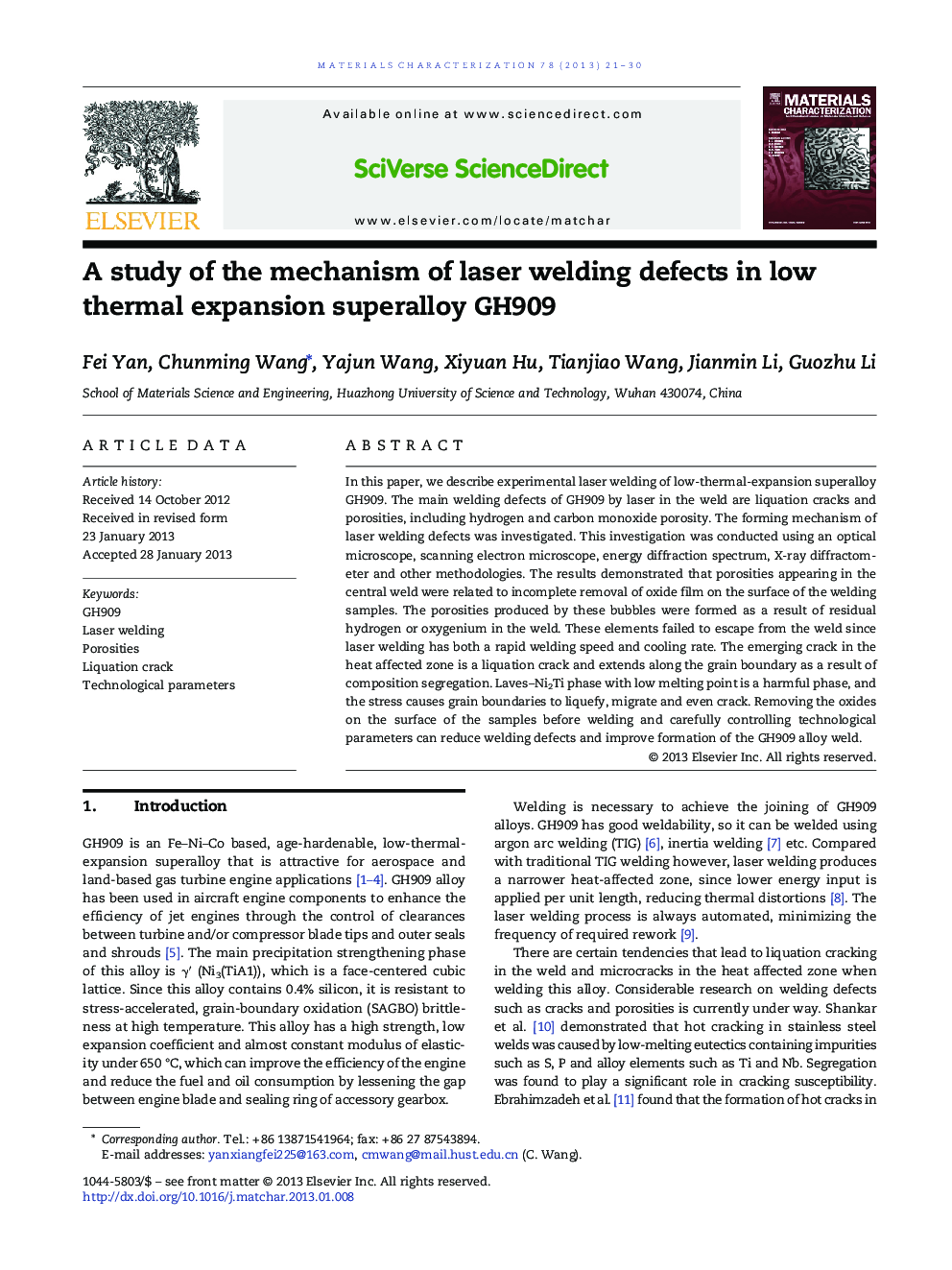| Article ID | Journal | Published Year | Pages | File Type |
|---|---|---|---|---|
| 1571336 | Materials Characterization | 2013 | 10 Pages |
In this paper, we describe experimental laser welding of low-thermal-expansion superalloy GH909. The main welding defects of GH909 by laser in the weld are liquation cracks and porosities, including hydrogen and carbon monoxide porosity. The forming mechanism of laser welding defects was investigated. This investigation was conducted using an optical microscope, scanning electron microscope, energy diffraction spectrum, X-ray diffractometer and other methodologies. The results demonstrated that porosities appearing in the central weld were related to incomplete removal of oxide film on the surface of the welding samples. The porosities produced by these bubbles were formed as a result of residual hydrogen or oxygenium in the weld. These elements failed to escape from the weld since laser welding has both a rapid welding speed and cooling rate. The emerging crack in the heat affected zone is a liquation crack and extends along the grain boundary as a result of composition segregation. Laves–Ni2Ti phase with low melting point is a harmful phase, and the stress causes grain boundaries to liquefy, migrate and even crack. Removing the oxides on the surface of the samples before welding and carefully controlling technological parameters can reduce welding defects and improve formation of the GH909 alloy weld.
► It is a new process for the forming of GH909 alloy via laser welding. ► The forming mechanism of laser welding defects in GH909 has been studied. ► It may be a means to improve the efficiency of aircraft engine production.
